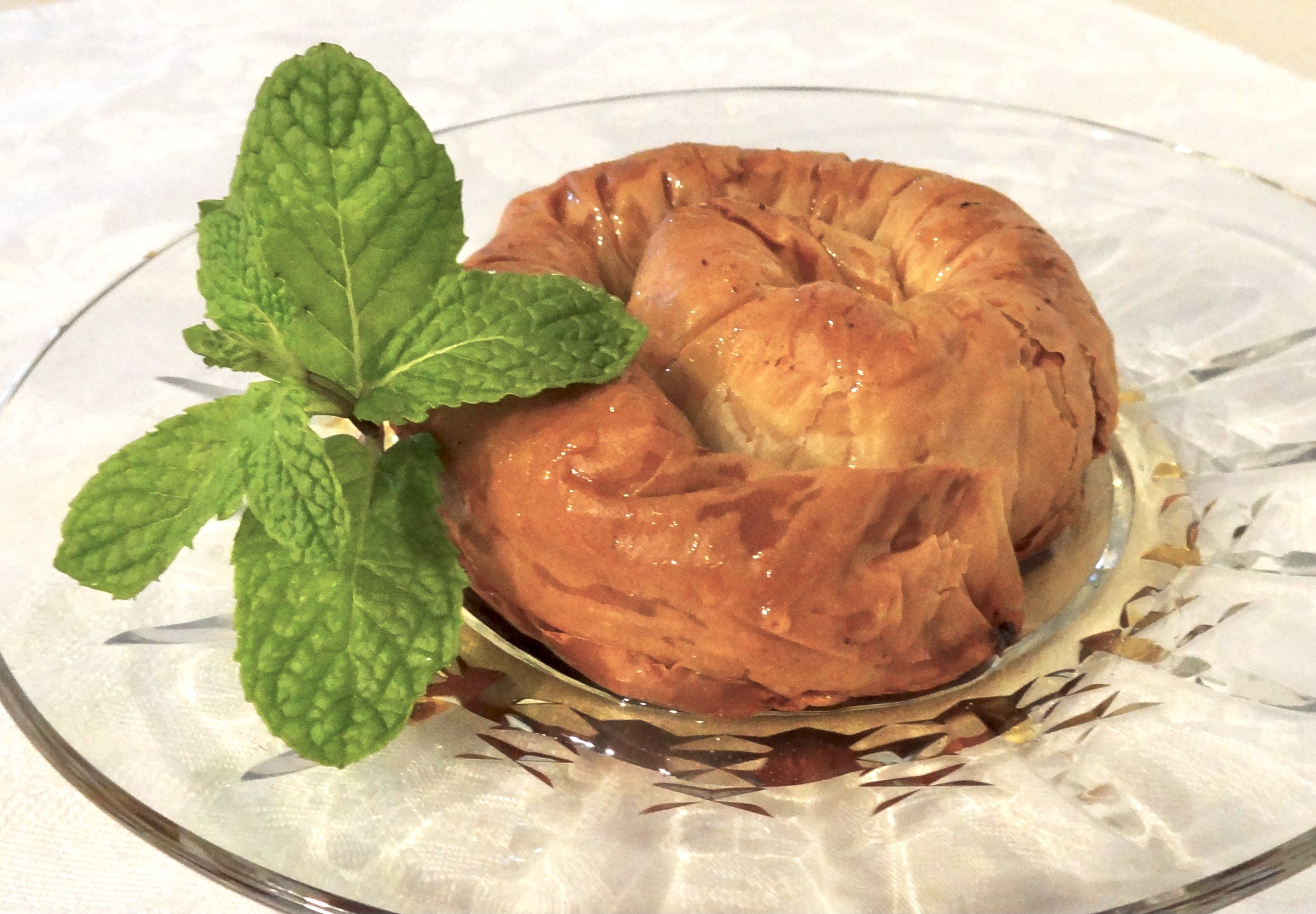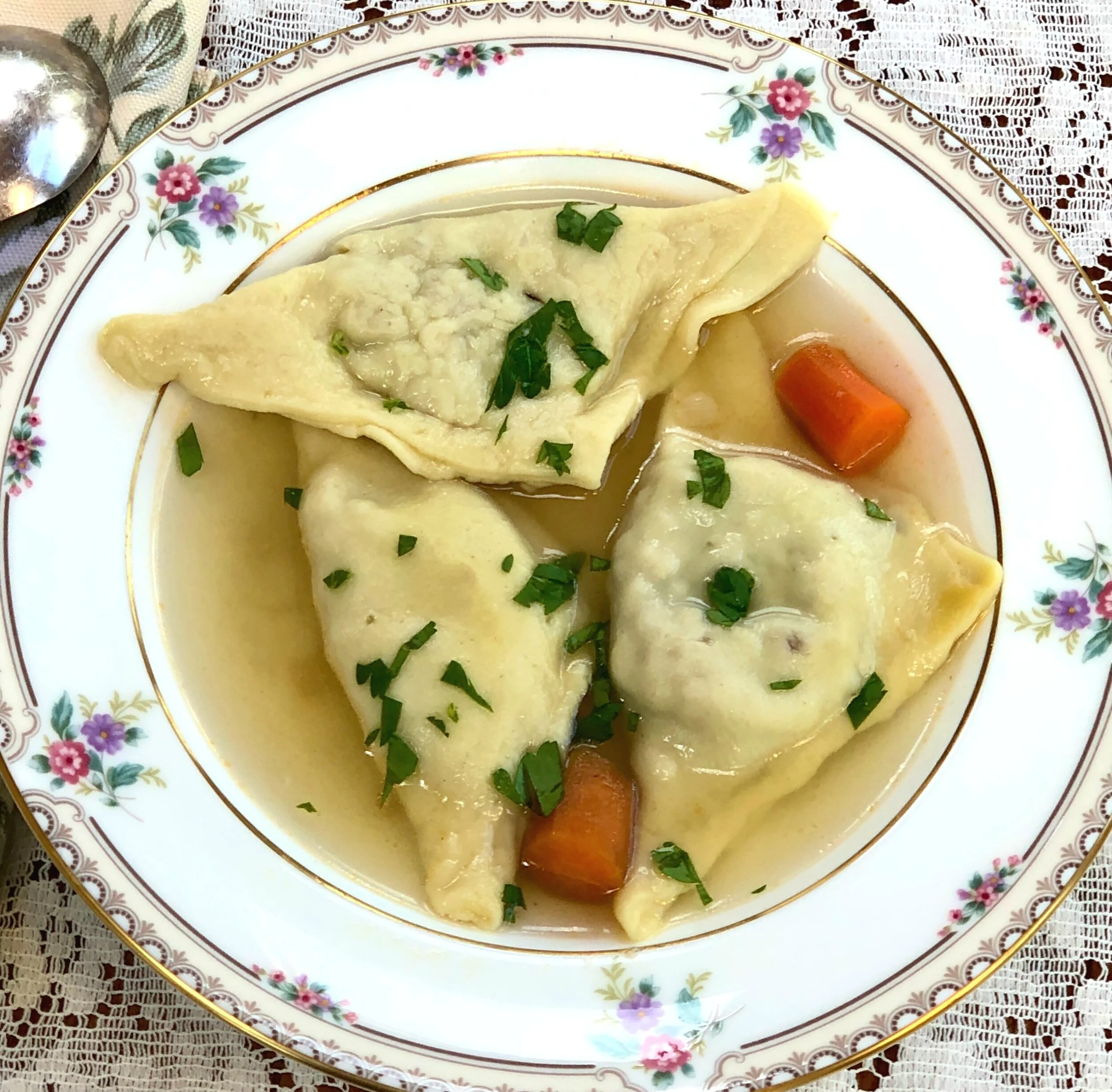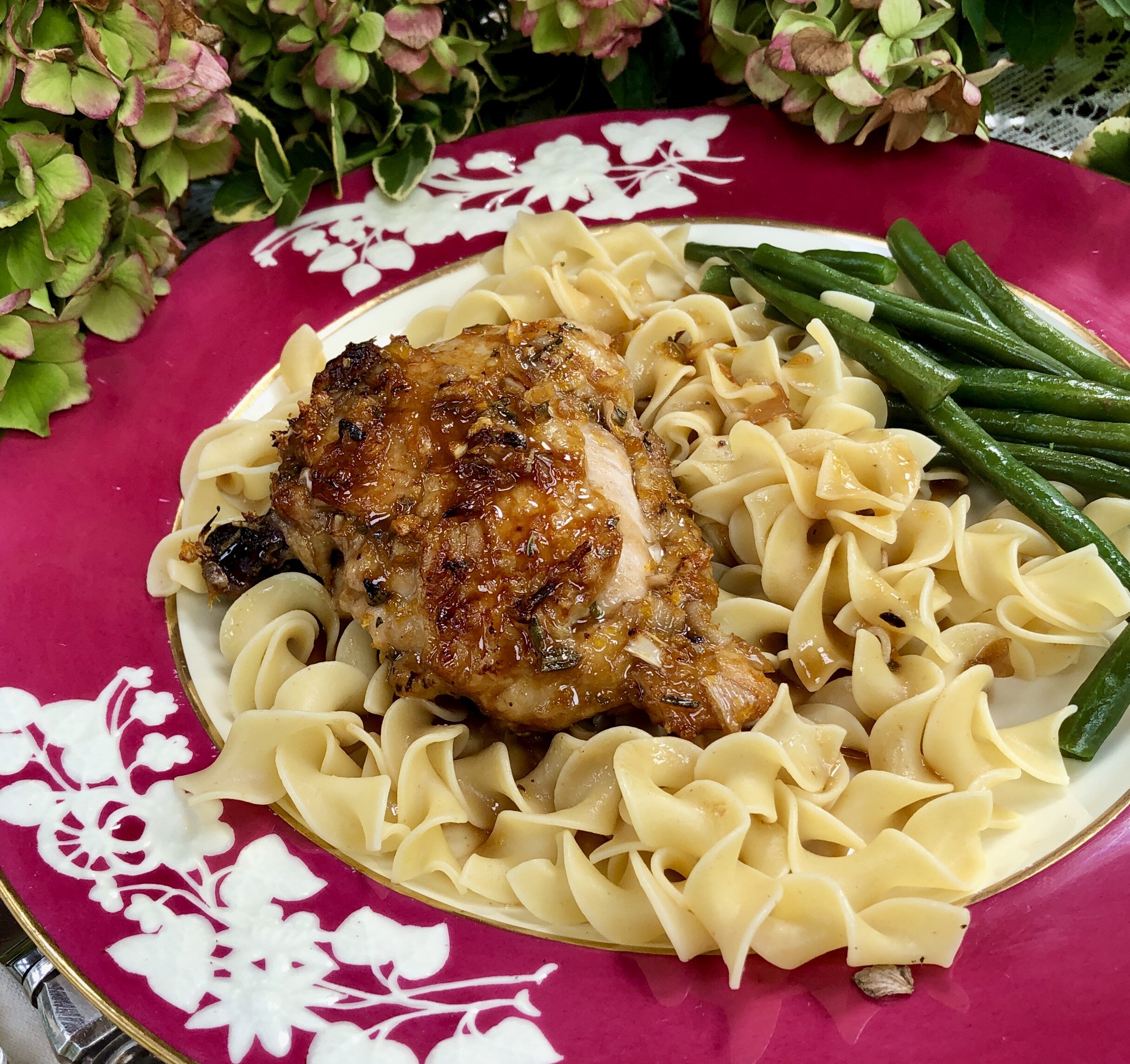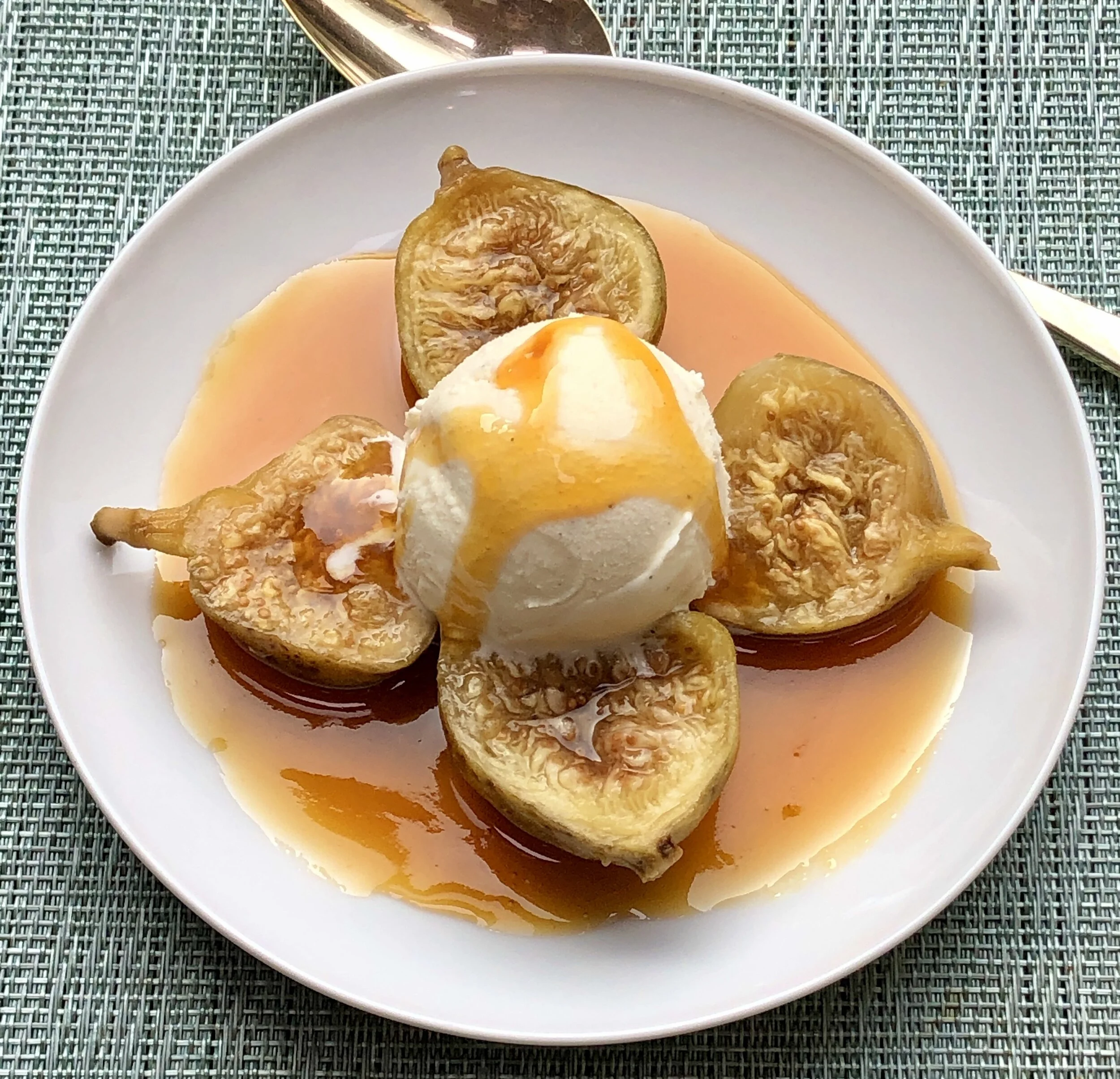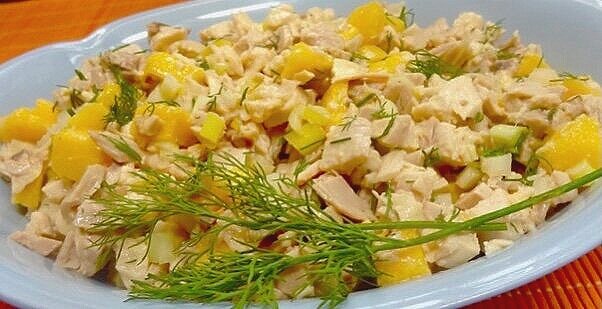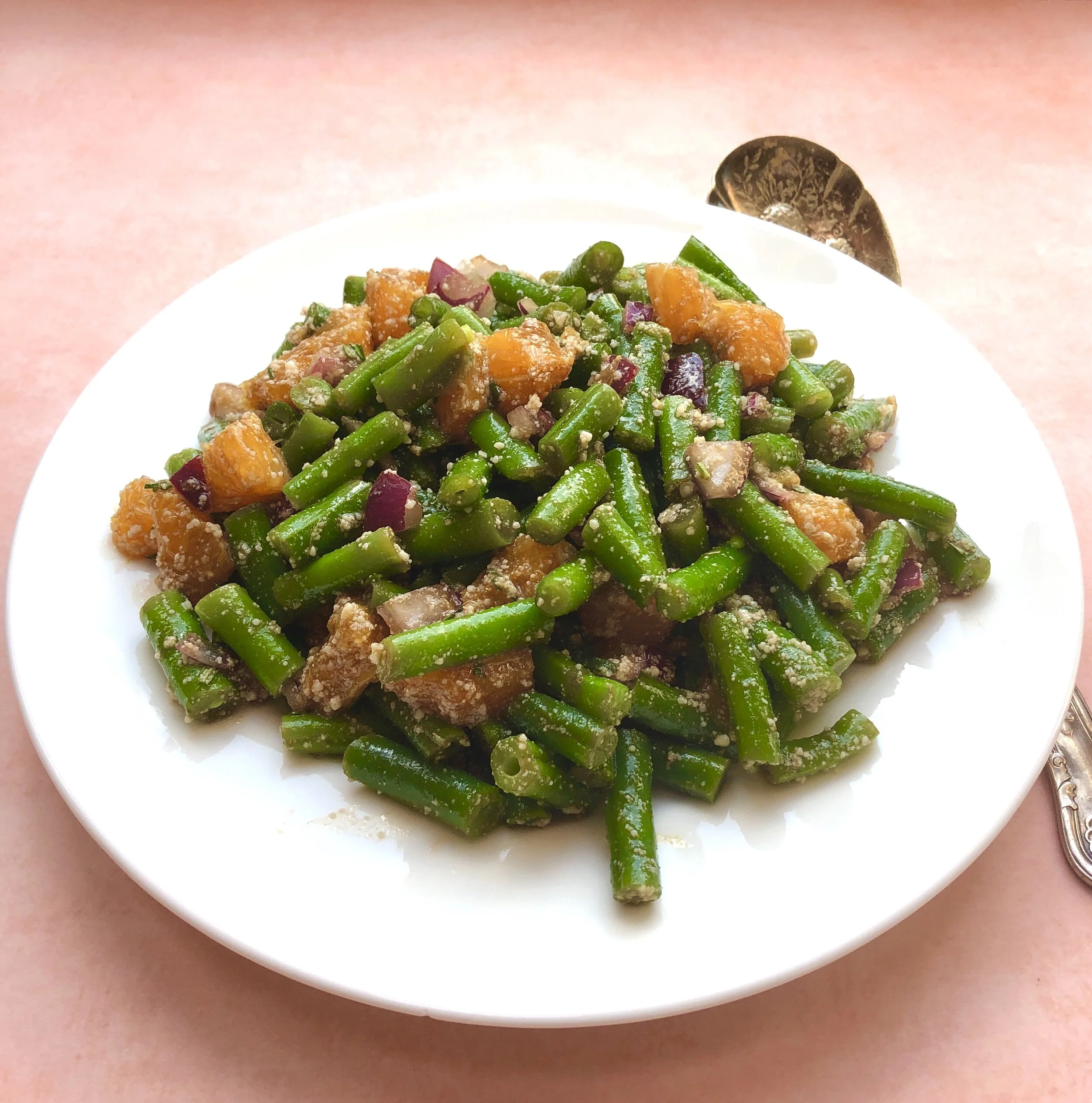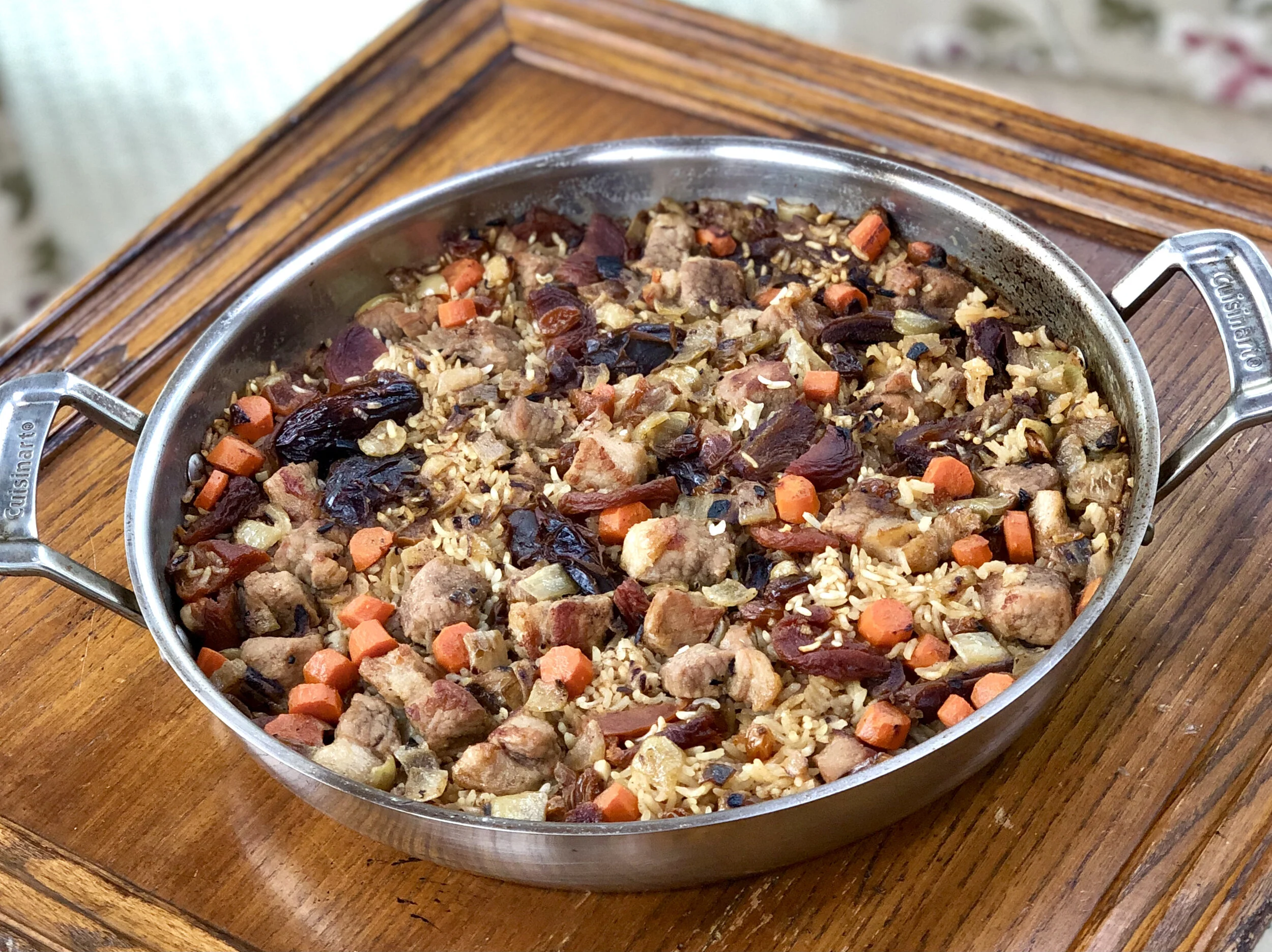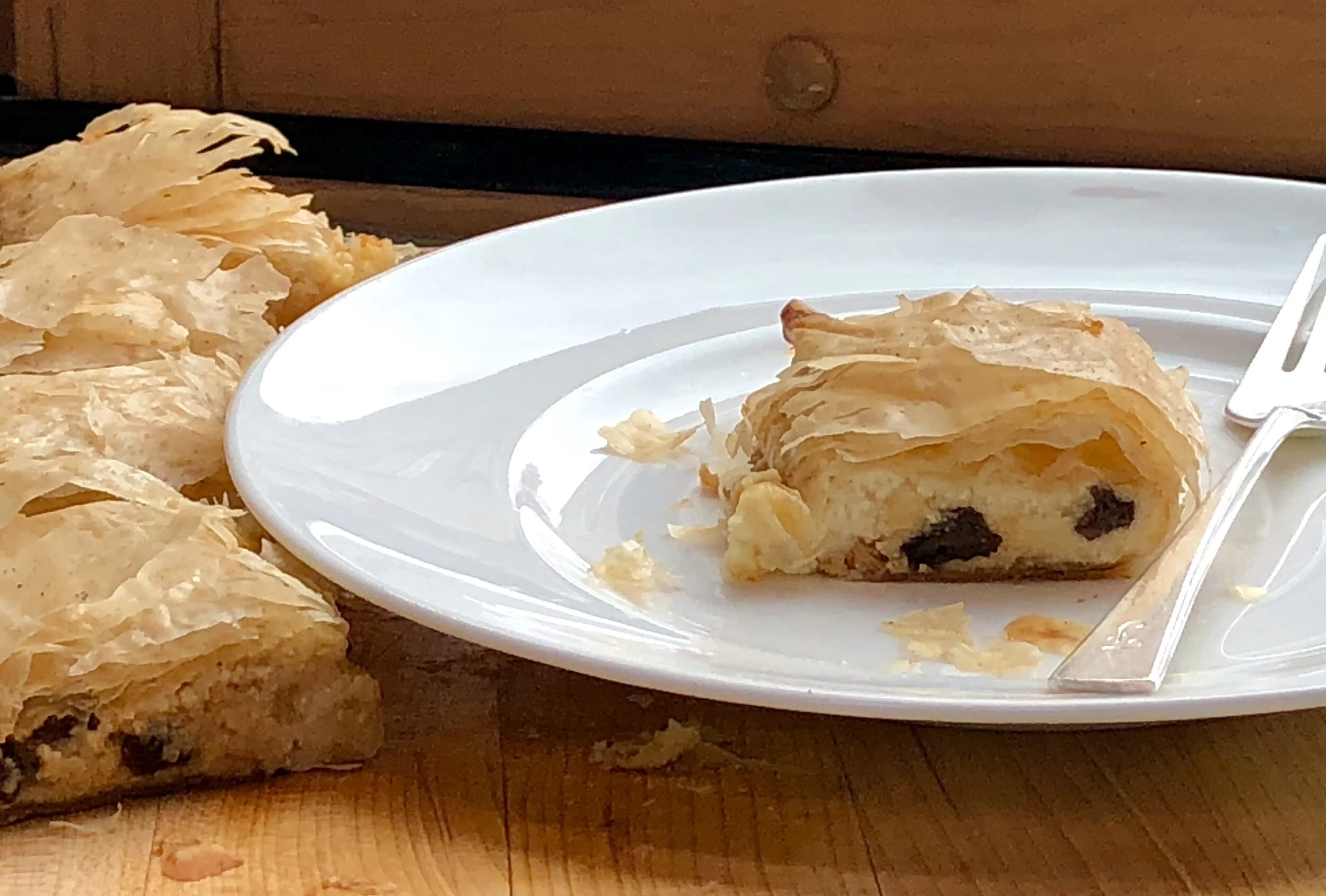Years ago, when we were in Egypt, I tried this dessert, called m’hencha, because it looked so pretty.
It was like a Proustian moment because it tasted so similar to my Romanian Jewish grandma’s turte, which is like baklava only made with almonds instead of walnuts, and sweetened with sugar syrup, not honey.
Unlike my grandma’s version, m’hencha is shaped like a snail, which I think looks much lovelier and so I decided to make this for New Year’s, when the cousins come for a visit. (I’m using honey instead of the syrup my grandma used.)
I’ll be curious to see if my cousin also remembers this delicious pastry from back in the day.
M’Hencha
2-1/2 cups ground almonds
1/2 pound butter, melted
1/4 cup sugar
1-1/2 teaspoons grated fresh orange peel
3/4 teaspoon ground cinnamon
1/2 pound phyllo dough
6-8 tablespoons honey
Preheat the oven to 375 degrees. Mix the almonds, 4 tablespoons melted butter, sugar, orange peel and cinnamon until well combined. Set aside. Using one phyllo sheet at a time, spread the dough out on a flat surface and brush lightly with melted butter. Top with the next phyllo sheet and repeat, using 4 sheets of phyllo. Spread about an inch of the almond mixture in a line about an inch from the edge on the long side. Roll the dough, jelly roll style, then coil it into a snake shape. Place the pastry on a cookie sheet. Brush with butter. Repeat 5 more times to make 6 pastries. Bake for about 25 minutes or until golden brown. While the pastries are baking, heat the honey until it is warm and liquefied. Pour the warm honey over the pastries and serve. NOTE: you can make smaller pastries: cut the phyllo sheets in half and proceed as above (makes 12).
Makes 6 servings
